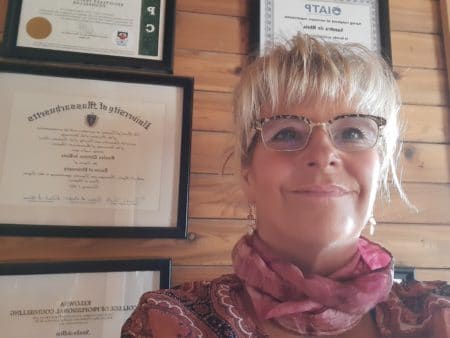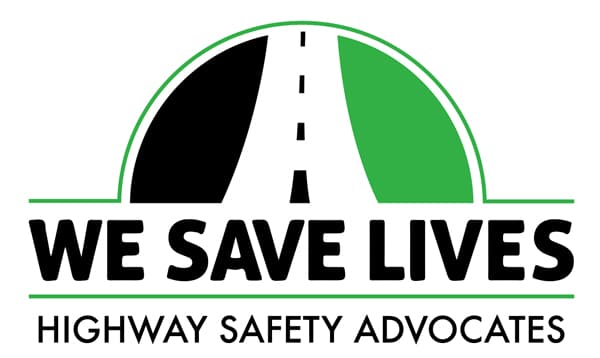
One morning in June of 1999 I was in a pedestrian cross-walk on my way to the University of Denver where I held a post-doctoral research position. I remember feeling particularly happy and hopeful about my future. Out of no where, a commercial truck appeared and hit me, sending me flying across three lanes. My sandals stayed at the point of impact and I landed in oncoming traffic. Fortunately, the light was red and good samaritans had time to surround me and re-direct traffic. I remember drifting in and out of consciousness and feeling incredible pain in my left thigh.
I vaguely remember the frenzy in the emergency room and hearing “closed head injury”, “severe contusion”, “compartment syndrome”. A doctor was flashing light in my eyes saying “you are very lucky. You could have easily died. You suffered a head trauma”. I recall the sudden onset of a horrific headache. I was kept under observation and after I returned home, I thought the worse was over. I had no idea how much my life would change.
The Doctors Sent Me Home Too Soon
I started noticing problems remembering, paying attention, and planning. Everything seemed to make me irritable and very anxious. I either slept too much or too little. My left thigh was so swollen that I could not see my knee. It was like a big block and the pain was acute and throbbing. I did not understand why the doctors sent me home in this condition.
Returning to the hospital for a MRI on my leg put me in a state of panic. I had to go by ambulance and it felt like I was reliving the whole event all over. The orthopedist had a worried look on his face as he told me he had to measure the pressure inside my thigh, saying that it was possible he may have to make a cut to relieve the pressure. Somehow, he judged he did not have to do that. Back at home, I immediately researched compartment syndrome and I felt horrified that it can lead to amputation of the limb if not treated fast enough. What is fast enough in my case? Is the doctor making a mistake by not relieving the pressure now? Should I get a second opinion? I was in tears and felt helpless. Thankfully, I did not develop compartment syndrome but had to go through many months of physiotherapy to be able to walk again.
I Felt Ashamed of My Diagnosis
My mental health took a turn for the worse. A psychologist diagnosed me with PTSD and depression. I was in denial and refused to take any medication. A neuropsychologist diagnosed me with post-concussion syndrome. I was deeply ashamed of the cognitive deficits I was experiencing. I had always been a very high functioning person. The depression got worse and my self-esteem plummeted. I lost interest in the research I was involved in. This accident created an existential crisis. Up to that fateful morning, I had had a very good life. Now, the suffering I was going through made me more aware of human suffering. I became more engaged in therapy and I realized how much my psychologist helped me cope with the PTSD symptoms.
Many years past and with therapy, my mental health was restored. I decided to pursue a career in mental health and to specialize in the treatment of trauma-related disorders such as PTSD, depression and anxiety. In 2019, I became certified in Reconsolidation therapy ™ after attending training with Dr. Alain Brunet at the Douglas Research Center, McGill University. Reconsolidation therapy ™ is a revolutionary treatment for PTSD that is based on the neuroscience of memories. It directly targets traumatic memories. It includes 6 treatment session and leads to complete recovery from PTSD in 70% of cases.
The Memory is Gradually Transformed
Furthermore, Reconsolidation therapy has very low relapse rate. The treatment is a combination of talk therapy done under the influence of a blood pressure lowering medication (a beta-adrenergic blocker). The medication blocks the reconsolidation (i.e., re-storing) of the emotional intensity of a traumatic memory while keeping the memory itself (i.e., declarative memory) intact. Thus, people continue to remember the traumatic event. However, they do so without re-experiencing it all over again. The memory is gradually transformed from “traumatic” to “unpleasant”. Consequently, PTSD symptoms such as increased startle response, hypervigilance, nightmares, flashbacks, extreme anger and so on are greatly reduced to the point where a person no longer meets the criteria for PTSD. Reconsolidation therapy is effective regardless of how old the traumatic memory is. Reconsolidation therapy can easily be delivered long distance through video-counselling. For more information please visit: www.myrecontherapy.com.
Submitted by Dr. Sandra de Blois, PhD
We welcome Dr. de Blois as a member of Crash Support Network and we thank her for her support.
This article is also featured in our 2020 Winter Issue of Sharing our Recovery
The Crash Support Network is a unique website consisting of an online support group, a Crash Survivor Blog written by a survivor, our Sharing Our Recovery Newsletter, informative articles and a Virtual Crash Memorial. Our website is based on relationship-building and puts the needs of survivors first by creating a helpful resource for victims and survivors of motor vehicle crashes.





